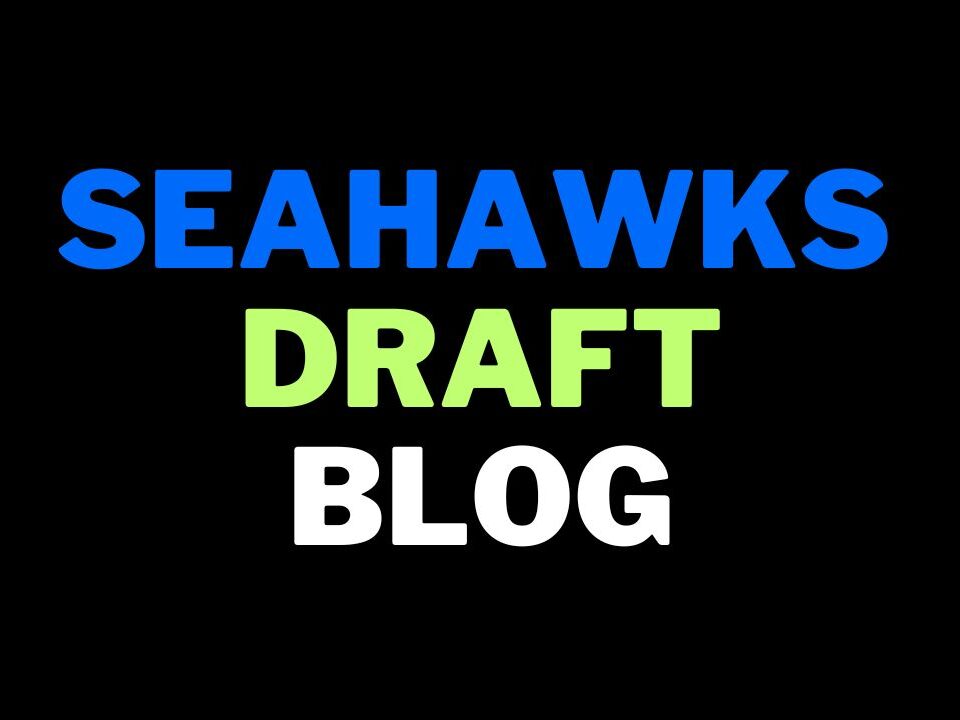
The Seahawks need to find the next Breno Giacomini to bolster an inexperienced O-line
In 2011 the Seahawks made a big commitment to the running game in the draft.
It was quite a statement at the time. They needed a quarterback. The likes of Andy Dalton and Colin Kaepernick were expected to go in the range of their first round pick (#25 overall).
Pete Carroll had to make a call — and he chose not to build around a young QB.
Carroll wanted a running game and in 2010 — even with the arrival of Marshawn Lynch — they had the worst running attack in the NFL. So they settled on Tarvaris Jackson at quarterback and built their O-line via the draft instead, while adding Robert Gallery in free agency.
Although they did achieve their goal of creating a potent ground game — the 2011 draft investment plus Gallery arguably had a minimal impact. It’s possibly the failure of Carpenter, Moffitt and Gallery that has shaped some of the current issues facing Seattle’s O-line.
They tried proven. They tried productive. Let’s go for upside instead.
It’s created a different type of problem up front.
James Carpenter was considered a surprise pick in the media — but anyone who spent considerable time watching Alabama knew why he went in the first round. Carpenter had a fantastic senior season playing left tackle. Mark Ingram won a Heisman running to the left. Carpenter dominated SEC defensive linemen with his power and size. He was easily the best run blocking tackle in the 2010 college season and the Seahawks clearly hoped he could have similar success in the NFL.
Seattle spent their second pick in the 2011 draft on another O-liner.
For years Wisconsin fielded big, powerful offensive linemen and they’d been able to run the ball with great success. John Moffitt didn’t possess any astonishing athletic traits. In many ways he looked like a classic ‘JAG’. He worked the inside with power and tenacity and the Seahawks probably felt his gritty style would benefit their interior line.
Carpenter’s size and length aside — neither player was particularly SPARQ-y. They had good tape. They were part of hugely productive running attacks. The Seahawks appeared to be looking not so much for difference making traits but instead for proven entities. Plug-in-and-play types. The Gallery pick-up, given his familiarity with Tom Cable in Oakland, wasn’t a big surprise either.
Moffitt quit the league shortly after a disappointing spell in Seattle and Carpenter struggled at tackle before shifting inside to guard. Neither draft pick paid dividends — although Carpenter’s annual handling of Justin Smith was always fun to witness. Gallery struggled to make an impact and didn’t last long either.
It’s not unfair to question whether these failures provoked a switch in Seattle’s thinking. Did they start to consider a new plan based on athleticism and upside? Without the dependency to spend high draft picks or go through free agency?
How much of this was forced through cost? Did they see a potential saving on the O-line to help pay for the new contracts dished out to Richard Sherman, Michael Bennett, Russell Wilson, Earl Thomas and co.? Or was it more than that? A genuine philosophical shift? “We want these types of players on our O-line.”
Since the 2011 draft the Seahawks have only spent one high pick on their O-line despite the loss of starters like Carpenter, Max Unger and Breno Giacomini. The second round pick — Justin Britt — was somewhat forced given the diminishing number of tackles available in the 2014 draft. Seattle didn’t have a third round pick that year and risked missing out on a full class of tackles. It was a major reach that at the time probably felt necessary.
Apart from that they’ve spent time converting athletic defensive linemen like J.R. Sweezy, Drew Nowak and Kristjan Sokoli. None of that trio cost a high pick. All carry an extremely high upside. They’ve also looked in the later rounds at guys like Mark Glowinski and Terry Poole.
It’s fair to say Seattle’s current plan for the O-line is having some teething problems. You could even say it’s having less success than the early draft picks in 2011.
Perhaps Carpenter and Moffitt arrived with bad habits? Combined with the fact both entered the league during a lock out — they were virtually thrown into the deep end when the new CBA was agreed. When Tom Cable eventually began working with the pair — was it hard to refine their technique? Cable’s made it clear he has to start coaching from scratch with college linemen — and it’s one of the reasons they’ve turned to former D-liners. If you’re starting with a blank canvas, why not go for the better athletes?
Yet there’s also a case to be made though for those battle tested blockers. They might have suspect technique and need a great deal of coaching — but they also have at least some grasp of the position. James Carpenter wasn’t a perfectionist with a well-honed blocking style. And yet he had a great deal of experience competing against the best the SEC had to offer before entering the NFL.
Doesn’t that count for something?
So what now as the Seahawks face what seems like an inevitable rebuild of their O-line? Aside from Russell Okung and J.R. Sweezy being free agents (their two most experienced linemen) you could argue they need replacements at left guard, center and right tackle too.
There’s nothing really to be lost taking on a project like Kristjan Sokoli. Wouldn’t it be better, though, to have him battling for a starting job against more experienced team mates? J.R. Sweezy won his job on a much more experienced line. Nowak, Britt and Garry Gilliam are almost starting by default.
Returning focus to the early rounds of the draft is probably necessary — especially if they have to replace Okung at left tackle. Auburn’s Shon Coleman is one of the most underrated players in college football and could easily jump into the top tier of draft picks for 2016. If he stays under the radar — he’d be a nice option for the Seahawks at either tackle spot or even at guard.
Yet it’d also be beneficial to add more of a veteran presence to the line while the Sokoli’s and Mark Glowinski’s learn their craft. If they don’t re-sign Okung and/or Sweezy it might free up enough room to have another tilt at Evan Mathis or look at Alex Boone. There might be another Breno Giacomini out there or even a Paul McQuistan. Nobody would ever tout McQuistan as a leading impact player — but it’s that veteran savvy and reliability at guard that at times Seattle has lacked.
A combination of youth, upside, experience and grit might be the way to get this back on track.
Giacomini — vilified by some at a time when the Seahawks roster had virtually no holes — is exactly the type of player Seattle currently lacks. Was he perfect? Far from it. Did he set the tone, offer genuine leadership and a punishing, physical blocking style? Absolutely. It’s no surprise that since he (and Carpenter) moved to New York, the Jets have been able to run with a purpose and offer adequate pass protection to Ryan Fitzpatrick.
They don’t necessarily need an elite group — they showed that in 2013. Following the Jets’ approach and plugging in a couple of veterans might be the ideal approach for Seattle.
They need a serviceable bunch who can develop some chemistry, run the ball consistently and give Russell Wilson more time than he’s currently receiving. Considering the Seahawks are right in the middle of what might only be a two or three year Championship window — stop gaps aren’t a bad thing. Finding a group that can get the job done right now should be the priority.
At the moment there seems to be a lack of the nous we saw in 2013. A good line doesn’t need endless first rounders or a bunch of big names. It does need attitude, experience, familiarity and execution. Ingredients that have been missing at times in 2015.
The current Seahawks line feels green and unless it shows a big improvement could be set for major surgery. Getting even younger isn’t ideal. Getting better — that has to be the target. And that could mean a combination of 2016 draft investment (two picks?) and some key veteran additions.



